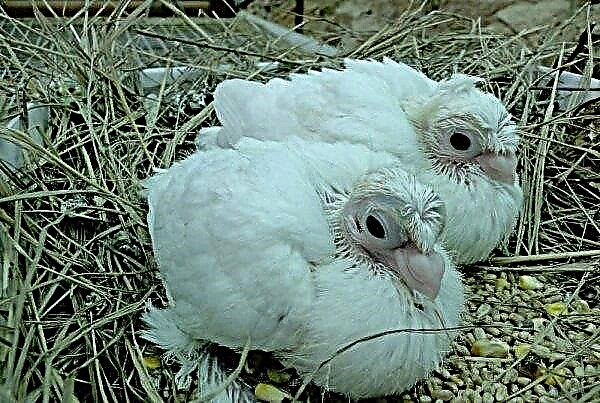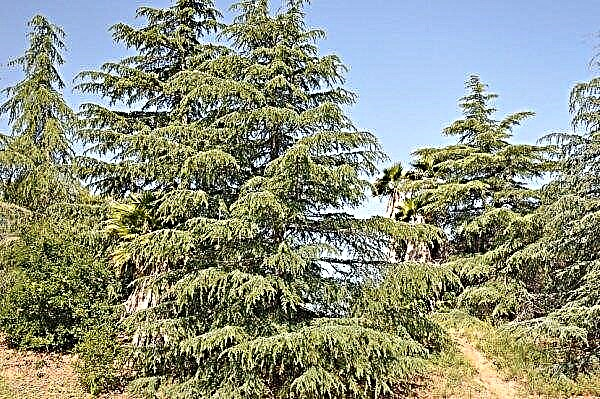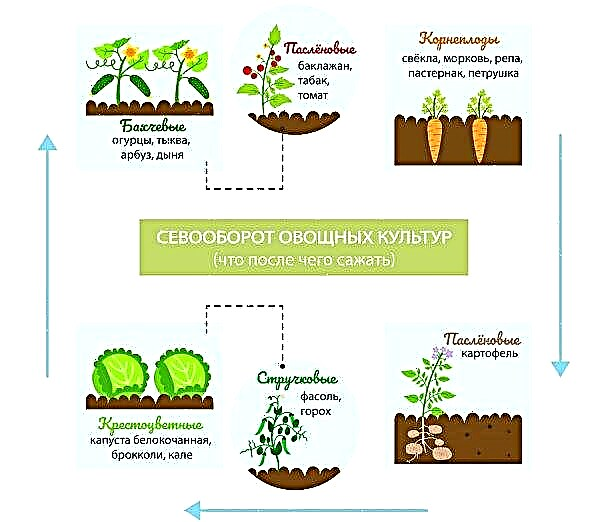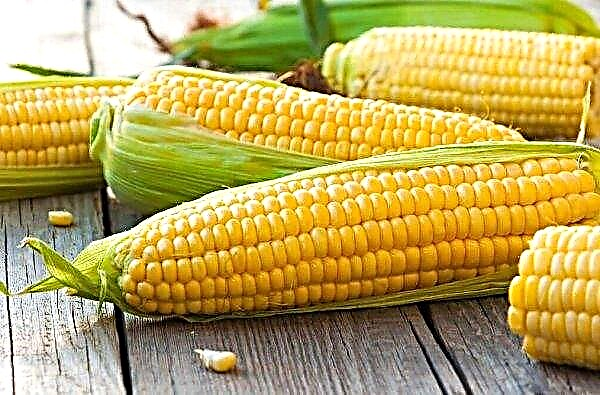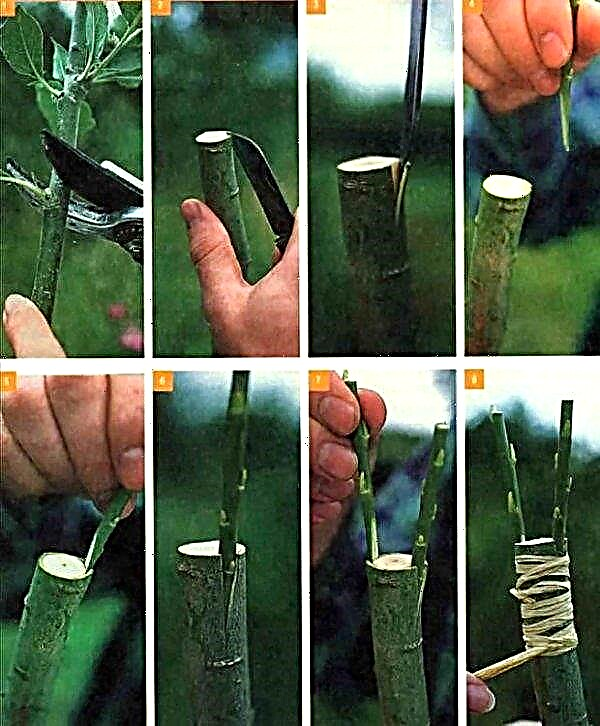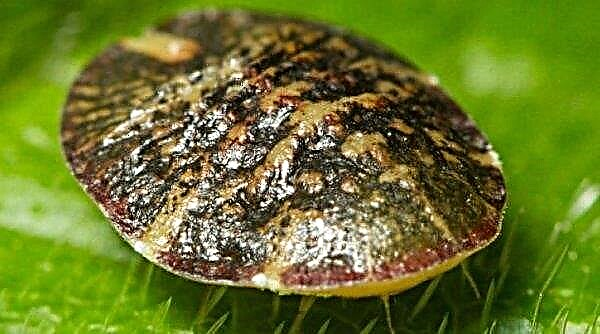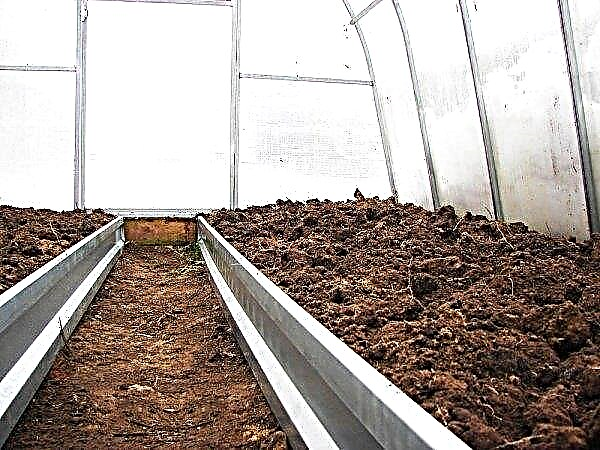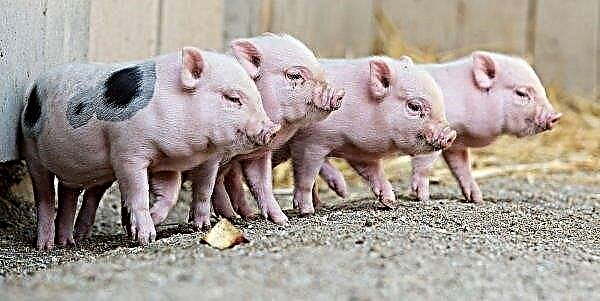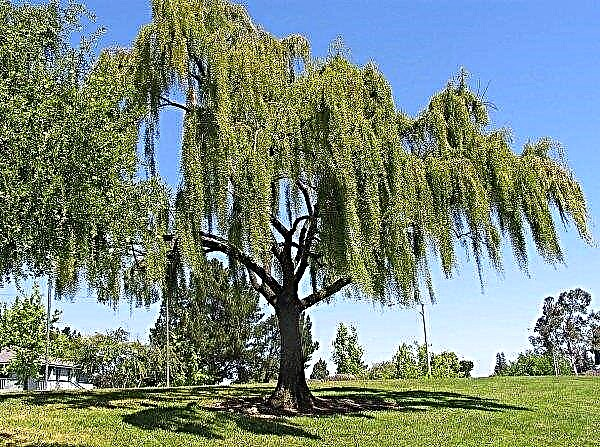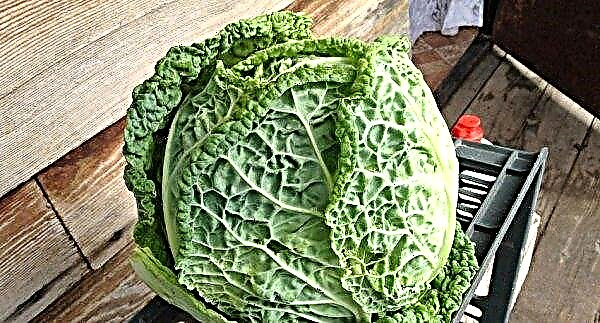Powdery mildew is a dangerous disease that affects the vast majority of garden crops, and cucumbers are no exception. A disease, also known as ashtray or linen, can lead to an almost complete loss of harvest if measures are not taken in time. The article will focus on the characteristic features of the disease and the complex of treatment and prophylactic measures aimed at protecting plants from this widespread ailment.
Signs and main causes of defeat
Cucumbers suffer from many diseases, the approach to the treatment of which is fundamentally different from each other, which is why it is very important to be able to differentiate powdery mildew from other diseases.

It is characterized by such signs:
- at first it looks like a powder of the upper part of the leaves with white plaque (mycelium);
- the first is the foliage located closer to the soil;
- over time, the affected area grows, capturing the lower parts of the leaf and stems, and then the whole plant;
- foliage dries and curls;
- if you look closely, you can also see small brown spores on the green, after the growth of which drops of moisture appear on the mycelium, which caused the name of the disease;
- after some time, the plaque darkens and becomes denser;
- flowers and ovaries fall;
- the few fruit that has begun to grow grow small, tasteless, crack, and rot.
The causative agent of the disease - the fungus of the Erysiphian order - affects the cucumber culture both in the open ground and in the greenhouse, but it is much easier for it to develop in greenhouse conditions.Did you know? Powdery mildew is dangerous for all deciduous plants, but each of them has its own "individual" pathogen. Therefore, the disease can not be transmitted, for example, from grapes to cucumbers.
The following factors contribute to this:
- increased air humidity and lack of ventilation of the greenhouse;
- high density planting bushes;
- waterlogged soil due to inappropriate irrigation;
- excess nitrogen fertilizers;
- temperature difference (if the street is warm during the day and cold at night);
- improper bush formation, lack of garter.
Disputes are easily transmitted through the air, through the hands of a person, clothes, garden tools, so there is no reason to hope that with the removal of one diseased bush it is possible to stop the spread of the disease.

What to do and how to treat cucumbers
At the first signs of the disease, treatment should be started immediately, otherwise the fungus will literally pull out all the juices from the bush, disrupting the photosynthesis processes, and lead to the death of the plant. Control measures include the use of chemicals and environmentally friendly folk remedies, but the latter can only be used at the very early stage of the disease, as part of complex therapy (due to low efficiency).
Important! Before proceeding to medical procedures, it is necessary to cut and destroy all affected leaves and stems.
Chemicals
All antifungal drugs are divided into two groups:
- Fungicides (with a fully synthetic composition).
- Biofungicides (based on natural organic components).

The choice of a specific remedy depends on when you need to sprinkle cucumbers.
Before the first fruits, you can use fungicides such as:
- "Privent";
- Bayleton;
- "Topaz";
- "Sulfaride";
- Tiovit Jet;
- Cumulus.
During fruiting, the use of non-toxic biological preparations is allowed, among which:
- "Bactofit";
- "Fitosporin";
- "Pseudobacterin-2";
- "Fitodoktor."
Important! Synthetic fungicides are toxic. When using, be sure to wear gloves and a mask (respirator).
Folk remedies
As already mentioned, alternative methods can be used prophylactically or to eliminate small foci of the disease.
For many years of struggle with the ashtray, gardeners invented a lot of methods of treatment with improvised means:
- whey (diluted with water in a ratio of 1:10);
- soapy soda solution (1 tablespoon of soda mixed with half a teaspoon of liquid soap and dilute 4 liters of water);
- potassium permanganate (2.5 g per 1 liter of water, dissolve well and bring the volume to 10 liters);
- decoction of horsetail (100 g of fresh grass per 1 liter of water, boil for 2 hours, cool, dilute with water in a ratio of 1: 5);
- milk with salt (non-skim milk is diluted with water in a ratio of 1: 3 and 1 tsp of salt is added for each liter of solution);
- cow manure infusion (rotted mullein is poured with water in a ratio of 1: 3, insist 3 days, filter and add 3 parts of water);
- mustard solution (2 tablespoons of mustard powder to mix in 10 liters of warm water).
Video: How to deal with powdery mildew using folk remedies
Prevention of powdery mildew on cucumbers
The disease spreads at lightning speed, and in the years of epiphytoties (epidemics), yield loss can be up to 70%. With this in mind, prevention plays a key role in the control of powdery mildew.
Measures aimed at preventing the disease include the following nuances:
- Suitable watering regime. You should not get carried away with frequent irrigation of plants or forget about watering for a long time, and then fill the bush with plenty of water.
- Maintaining a temperature in the greenhouse of about +23 ... + 25 ° С.
- Moderate use of fertilizers.
- The scheme of planting bushes with a sufficient distance between them (40-60 cm).
- Regular ventilation and disinfection of the greenhouse.
- Systematic weeding and loosening of soil.
- Compliance with the rotation of vegetables (the next year after planting cucumbers plant other vegetables).
- Planting seedlings of cucumbers in warm, dry weather.
- Tied stems.
- Deep digging of soil in the autumn with the disposal of the remains of bushes.
- Planting infection-resistant varieties.
We advise you to learn about other diseases of cucumbers and methods of combating them:
Sustainable Cucumber Varieties
Powdery mildew is best opposed by new varieties of cucumbers, especially F1 partenocarpic hybrids (which do not require pollination).
These include:
- Gherkin Thumbelina;
- also resistant to temperature extremes;
- suitable for daily collection of Gerasim pickles;
- precocious and high-yielding Corporal.
Among bee pollinated varieties with high immunity are:
- high-yielding nobleman with its beautiful and tasty fruits;
- precocious and universal Dear;
- high-yielding, tasty and suitable for growing in difficult weather conditions Amurchonok;
- Gherkin Ginger.
Did you know? An unusual variety of cucumbers called resistant to fungus "Salt with pepper». It was bred in 2011 by American agronomists. Its main difference from other cucumbers is the white color of the fruit interspersed with black dots, which gave the name to the variety.
In addition, resistance to fungal diseases is possessed by:
- super-early hybrid Arctic;
- very fruitful Sigurd with excellent taste;
- Ideal for salting sheet;
- high-yielding Lenara with fairly low-lying fruits;
- universal, early and high-yielding gherkin German;
- Suitable for growing without support, in Fugue spread.

So that efforts to grow cucumbers are not wasted, one should not forget about the prevention of fungal diseases, including powdery mildew. This will help you discussed in the article the methods of disease prevention and chemicals that should be used as soon as a characteristic white coating on the leaves of the plant was noticed.

